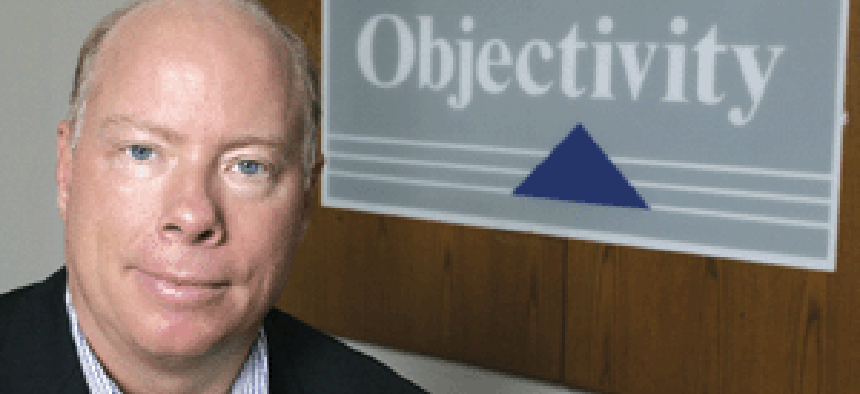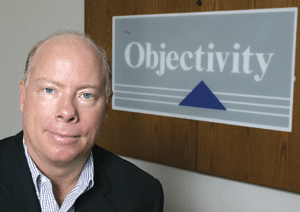Tech Success: Energy lab grows with Objectivity technology

To capture the data from one of its particle-colliding experiments, the Energy Department's Stanford Linear Accelerator Center has created what it claims is the world's largest database, one with more than 800 terabytes of data.
To capture the data from one of its particle-colliding experiments, the Energy Department's Stanford Linear Accelerator Center has created what it claims is the world's largest database, one with more than 800 terabytes of data.But instead of tapping the well-known purveyors of databases ? IBM Corp. and Oracle Corp. -- the center's information technology team selected Objectivity/DB from Objectivity Inc., Mountain View, Calif., for the massive task."Objectivity seemed to have an architecture inherently scalable up to the amount of data we were going to handle," said Richard Mount, the center's head of computing. Looking beyond the research market, Objectivity now is pitching its solution as a way for the Homeland Security Department to tie together the mountains of disparate data it will have to sort and analyze. "The problem we would be solving is one of finding a needle in many haystacks -- in real-time," said John Jarrell, president, director and chief executive officer of Objectivity. The agency would incorporate data from a wide range of sources and, therefore, need the kind of distributed architecture that the Objectivity/DB was built to accommodate, Jarrell said. The Stanford Linear Accelerator Center first looked at Objectivity in 1986. Researchers from Stanford University and the Lawrence Berkeley National Laboratory were ramping up the International BaBar Collaboration, which involved crashing particle beams into each other inside a linear accelerator. The resulting data, captured from sensors within the facility, would help researchers better understand the relationship between matter and antimatter.However, these experiments produced huge amounts of data, up to a terabyte's worth each day. (A terabyte is 1,000 gigabytes.) So when planning the database, Mount's team members knew they had to think big. They also had to stay on budget, which meant that up to 80 percent of the data captured would be kept on cost-effective magnetic tape. So the database had to support a distributed architecture, in which most of the data would be on tape. The relational databases, such as Oracle's, could not support this model, Mount said.Another factor Mount's team had to consider was how the researchers wrote programs to analyze data. They were more familiar with the object oriented C programming language than SQL, the language driving relational databases. Relational databases are designed to establish links between different fields of data, allowing programmers to establish relationships among different classes of data. The Stanford work "doesn't fit the relational model very well," Mount said. The relationships among all the data are not so clearly defined. Objectivity's database is object-oriented, meaning that programming code can be divided into separate modules, making it easier to reuse and to map complex procedures. This modular approach allowed researchers to think more naturally about how to structure their programs, Mount said. Because much of the code is reusable, it also enabled the researchers to cut back by about 40 percent the amount of code they needed to write. More than 5 million lines of Java and C code have been written to analyze the data. The object-oriented approach also helped facilitate the distributed architecture. A 50-employee company, Objectivity was founded in 1988 and focuses on the telecommunications, manufacturing and government markets. The government is the company's greatest area of growth, particularly in military and intelligence agencies, Jarrell said.Objectivity allows integrators to undercut bids by saving in development costs, and to build a service practice around the product, Jarrell said. Objectivity does not itself offer services and consulting. General Dynamics Corp., Lockheed Martin Corp., Northrop Grumman Corp. and Raytheon Co. have all used the Objectivity database in government work. The developer edition of Objectivity/DB runs about $10,000 per copy, and the company also collects run-time licensing fees for the use of the database once it's deployed. The Stanford Linear Accelerator Center's installation cost is "under a million," according to Mount. Companies such as Computer Associates International Inc., Islandia, N.Y., and Poet Software GmbH, Hamburg, Germany, also offer object-oriented databases. However, Objectivity is a major vendor in this field, said Betsy Burton, an analyst for Gartner Inc., Stamford, Conn. Burton also said the field as a whole is a small niche market, and warned integrators against thinking object-oriented databases could replace relationship databases in most instances. She said using object-oriented databases is advantageous only in select cases where complex data is stored. For most implementations, particularly transactional ones, relational databases would be most suitable.Gartner estimated the object database market is about $300 million a year, compared to the $12 billion market for the relational databases offered by IBM and Oracle. If you have an innovative solution that you recently installed in a government agency, contact Staff Writer Joab Jackson at jjackson@postnewsweektech.com.
 Little-known database could provide key to homeland defense
Little-known database could provide key to homeland defense

John Jarrell of Objectivity said its software can find "a needle in many haystacks."
Norbert Van Der Groeben
NEXT STORY: Dahlberg to lead SAIC

